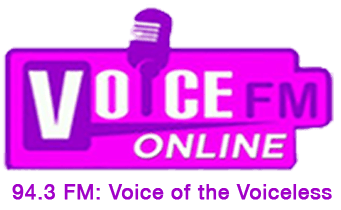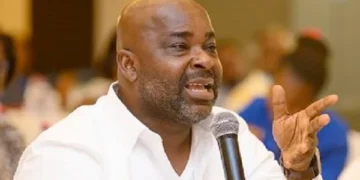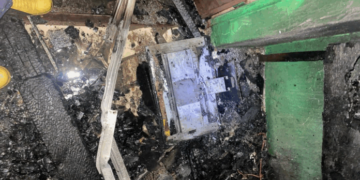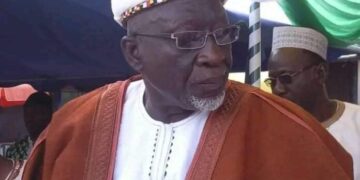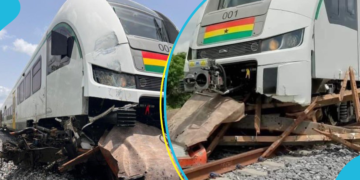Policy think tank Imani has said it will launch a tracker on the Free Senior High School policy.
Dubbed EQUINOX – Expanding Quality, Inclusion & New Opportunities in Education, the tracker will gauge and assess the implementation of the Free SHS policy.
President Nana Addo Dankwa Akufo-Addo recently assured Ghanaians that his government “will fund the cost of public Senior High Schools for all those who qualify for entry from the 2017/2018 academic year onwards”.
Spelling out the details of the policy, “so that no one in Ghana is left in any doubts”, President Akufo-Addo explained: “By Free SHS, we mean that, in addition to tuition, which is already free, there will be no admission fees, no library fees, no science centre fees, no computer lab fees, no examination fees, no utility fees; there will be free textbooks, free boarding and free meals, and day students will get a meal at school for free.”
The president added further: “Free SHS will also cover agricultural, vocational and technical institutions at the high school level. I also want to state clearly again that we have a well thought-out plan that involves the building of new public senior high schools and cluster public senior high schools”.
President Akufo-Addo made this known on Saturday, February 11, 2017, when, as the Special Guest of Honour, he delivered a speech at the 60th anniversary celebration of Okuapeman School.
Also, recently, Senior Minister Yaw Osafo Marfo said the government intends using oil money from the Heritage Fund to bankroll the Free SHS programme.
This has generated intense debate with groups like the Africa Centre for Energy Policy (ACEP) and the Kumasi Institute for Technology and Environment have kicked against the move.
Below is IMANI’s full statement:
IMANI to Launch Tracker for “Free SHS” called EQUINOX- Expanding Quality, Inclusion & New Opportunities in Education
A raging debate over the feasibility and funding of Ghana’s secondary education has reached its zenith with the announcement of expanded subsidies for almost every fee-paying item on the high school menu by the state, in fulfilment of a political campaign promise by the new government. The campaign promise is famously known as “Free Senior High School’’ or “Free SHS’’.
There is a fair amount of consensus in Ghana today for the first 12 years of education to be guaranteed for every child of school-going age. There is at the same time widespread concern about educational outcomes.
Many objective international measures suggest that academic performance, aptitude development and skills acquisition are either stagnant of falling.
Every major section of the political elite has committed to addressing these problems as a matter of urgency. What is less apparent on the surface of the debates and discussions is that both expanding access and enhancing outcomes depend on an injection of more resources in addition to structural reforms, especially in the area of supervision and accountability.
It appears even less evident that the public appreciates the significant diversity among models used worldwide for this two-prong approach of fixing access and quality outcomes synergistically. The ruling NPP government has decided to opt for a model that relies on expanded government subvention, fees abolishment and general taxation.
The Minister of Education has announced a September 2017 timeline and a budget of $800 million for implementation. It is not clear if this is additional money or the aggregate Senior High School (SHS) budget once the rollout commences. We will assume that he is referring to the size of the total SHS budget (currently at ~$330 million) in the 2017/2018 academic year as a result of the program’s commencement. His enrolment projections seem however over-optimistic.
He appears to believe that an additional 800,000 students can be added to the secondary education population within a year of program launch. This is both arithmetically and analytically difficult to understand. If current enrolment rates of 65% at secondary level are credible, then it is unlikely that additional numbers exceeding 400,000 new students can be recorded in the medium-term.
This underscores our suspicion that a good deal of the funding for this project will go to administrative overheads rather than into direct investments into school budgets. The Minister’s numbers appear to indicate an administrative budget of more than $400 million. This is the only conclusion to draw as his numerical projections are suspect.
Even from this brief discussion it is clear that there is still considerable confusion about the underlying statistics and operational methodology, not to even talk of conceptual coherence, as far as the government’s choice of universal, effective, SHS is concerned. That is why IMANI is announcing the launch of a new Tracker for what has popularly, even if also erroneously, come to be known as ‘FREE SHS’.
The Tracker shall be known as EQUINOX- Expanding Quality, Inclusion & New Opportunities in Education EQUINOX is a unified gauge with composite indicators. These indicators include ‘enrolment trajectory’, ‘per capita. spending’, ‘per capita spending efficiency’, ‘assessment metrics’, ‘resource disbursement schedules’, and ‘resource availability metrics’.
We are very much aware that mixing qualitative and quantitative metrics to obtain standardised ratings can be both difficult and problematic, but we have assembled methodology that shall be validated during the baseline studies we are commencing.
The other methodological concern is frequency of reporting, to the extent that this depends on the ‘movement’, ‘volatility’ or ‘periodicity’ of the core indicators. If changes in status cannot be measured at fairly frequent intervals, regular reporting becomes useless, and public interest, and even confidence, can wane. Yet, some important features of public education change much too slowly to generate the kind of movement in indicator measurements necessary to sustain public interest and therefore to advance advocacy goals. For example, changes in enrolment figures can only be detected at the onset of the academic year. Thus, a quarterly publishing period will not show any significant movement on that score. Of course, the punctuality of resource disbursement can be measured from trimester to trimester, which is as close to quarterly as possible.
Satisfaction level surveys can be stubbornly qualitative, with a high degree of subjectivity, raising serious concerns about such the impact of such major fault lines in our politics and society such as the rural-urban divide, the NPP-NDC geographic ‘stronghold’ effect, and philosophical issues about ‘citizen expectations’ in a patronage-based political system.
Our current conviction on ‘periodicity’ is that ‘continuous’ exhibition of the results in real-time and a regulated amount of ‘crowdsourcing’ to garner input from the public would be essential, rather than damaging, to the integrity of the Tracker.
We already have some software architectural ideas in mind, though our intention is to start with rather simple database designs and easy-going user interfaces so as not to overcomplicate the project. The chance to combine participation, accountability and content depth in one strategy is however too tempting not to give the idea our fullest attention. We have taken these and many more factors in mind.
The inception report we aim to publish in due course with provisional results from our baseline studies shall shed more light on how EQUINOX shall resolve the challenges of measurement, standardisation, and integrity.
IMANI does not aim to go alone in this massive effort. Serious steps are being made to establish a multi-stakeholder program within, across, and beyond Ghanaian civil society in recognition of the deep national character of this intervention. The hope is that many of our readers, supporters, and friends shall reach out enthusiastically to share ideas and offer suggestions for the success of this endeavour.
Source: Ghana/AccraFM.com
